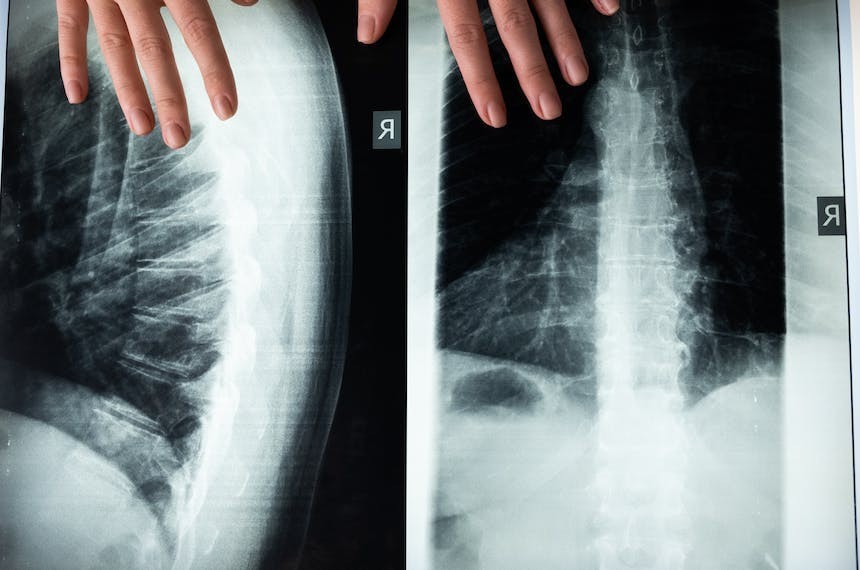
Amyotrophic Lateral Sclerosis
This article provides a comprehensive overview of Amyotrophic Lateral Sclerosis (ALS), a degenerative motor neuron disease characterized by symptoms like hyperreflexia, spasticity, and limb weakness. It emphasizes the need for a multidisciplinary management approach involving various healthcare professionals. The article details treatments like riluzole, edaravone, and investigational therapies, along with their dosages and side effects. It also discusses experimental therapies, symptom management strategies for respiratory issues, dysphagia, muscle spasms, fatigue, and pseudobulbar affect, and underscores the importance of palliative and hospice care.
Amyotrophic Lateral Sclerosis Overview
ALS is a degenerative motor neuron disease with both upper and lower motor neuron symptoms and signs. The upper motor neuron features include hyperreflexia and spasticity, while the lower motor neuron signs include atrophy and fasciculation. Asymmetric limb weakness is the most common presentation of the disease. ALS causes impairment affecting limbs, bulbar, axial and respiratory muscles (life threatening). Also, patients may have cognitive impairment related to frontotemporal dementia (FTD). The median survival of ALS is three to five years.
Multidisciplinary Management Approach
Multidisciplinary approach for management is required. It includes neurologists, physical therapists, occupational therapists, speech therapists, respiratory therapists, dieticians and social workers. Treatment includes disease modifying agents, investigational therapy and symptom management.
Disease-Modifying Treatments
Disease modifying treatment could slow down the progression of the disease. They include riluzole (50 mg twice daily), edaravone (60 mg is by intravenous infusion over 60 minutes. Treatment is started with daily infusion for 14 days, followed by 14 days off treatment. Subsequent treatment cycles involve daily edaravone 60 mg infusions on 10 days within a 14- day period, followed by 14 days off treatment). The most common adverse effects of riluzole are asthenia, dizziness, gastrointestinal disorders, and elevations in liver enzyme activities. Liver function tests are indicated monthly for the first three months of riluzole treatment and every three months thereafter. Edaravone could cause injection site contusion, gait disturbance and/ or headache.
Experimental Therapies
New experimental therapies for ALS include Antisense oligonucleotide therapy and ravulizumab (long acting C5 complement inhibitor) are still under investigation.
Symptom Management Strategies
Symptom management is directed to respiratory symptoms, dysphagia, muscle spasm, fatigue, and/ or pseudobulbar affect. Patients with ALS should have serial assessment of respiratory function with forced vital capacity (FVC) every three months starting at the time of diagnosis. A decrease to <25-30% of predicted is associated with significant risk of respiratory failure or sudden death. Noninvasive positive pressure ventilation (NPPV) is the standard of care for patients with respiratory insufficiency. Invasive mechanical ventilation might be considered and has to be discussed carefully with attention to the full burdens and benefits to the patient. Additionally, discussions with patients should include the option to stop the ventilation at any time Dysphagia increases the risk for insufficient caloric intake and worsening of fatigue. Initial management of dysphagia includes modification of food and fluid consistency. In addition, nutritional supplementation using PEG may be helpful for stabilising weight loss. Muscle spasms can cause severe pain and discomfort. Nonpharmacological measures include stretching and massage . Also, mexiletine 150 mg daily, levetiracetam (500 mg daily) could help. Fatigue is very common in ALS. Modafinil 100 mg daily could be beneficial. Other treatment options for fatigue include glucocorticoids (a two- week trial of dexamethasone 8 mg daily) and megasterol acetate (400 - 800 mg daily). Pseudobulbar affect (emotional liability) which result from bilateral corticobulbar tract degeneration. Treatment options for pseudobulbar affect include the combination of dextromethorphan/ quinidine (20 mg/ 10mg at a starting dose of one capsule daily for seven days, then increase to one capsule twice daily). Also, amitriptyline 10- 25 mg at bedtime, fluvoxamine 100 mg daily could benefit.
Palliative Care and End-of-Life Considerations
Finally, palliative care is required in the course of the disease and referral to hospice care is advised in the terminal phase of ALS. A discussion of advance directives should be initiated early in the disease.
References
References:
1- Rowland, L.P.; Shneider, N.A. Amyotrophic lateral sclerosis. N. Engl. J. Med. 2001, 344, 1688–1700.
2- Mitchell, J.D.; Borasio, G.D. Amyotrophic lateral sclerosis. Lancet 2007, 369, 2031–2041.
3- Armon, C. An evidence-based medicine approach to the evaluation of the role of exogenous risk factors in sporadic amyotrophic lateral sclerosis. Neuroepidemiology 2003, 22, 217–228.
4- Oskarsson, B.; Gendron, T.F.; Staff, N.P. Amyotrophic lateral sclerosis: An update for 2018. Mayo Clin. Proc. 2018, 93, 1617–1628.
5- Dorst, J.; Ludolph, A.C.; Huebers, A. Disease-modifying and symptomatic treatment of amyotrophic lateral sclerosis. Ther. Adv. Neurol. Disord. 2018, 11, 1–16.
6- Jaiswal, M.K. Riluzole and edaravone: A tale of two amyotrophic lateral sclerosis drugs. Med. Res. Rev 2019, 39, 733–748
7- Kiernan, M.C. Motor neuron disease in 2017: Progress towards therapy in motor neuron disease. Nat. Rev. Neurol. 2018, 14, 65–66.
8- Miller RG, Jackson CE, Kasarskis EJ, et al. Practice parameter update: the
care of the patient with amyotrophic lateral sclerosis: drug, nutritional, and
respiratory therapies (an evidence-based review): report of the Quality Standards Subcommittee of the American Academy of Neurology. Neurology 2009; 73:1218.
9- Schiffman PL. Pulmonary function and respiratory management of ALS. In: Amyotrophic Lateral Sclerosis: Diagnosis and Management for the Clinician, Belsh JM, Schiffman PL (Eds), Futura, 1996. p.333.
10- Mazzini L, Corrà T, Zaccala M, et al. Percutaneous endoscopic gastrostomy and enteral nutrition in amyotrophic lateral sclerosis. J Neurol 1995; 242:695.
11- Nicholson K, Murphy A, McDonnell E, Shapiro J, Simpson E, Glass J, Mitsumoto H, Forshew D, Miller R, Atassi N: Improving symptom management for people with amyotrophic lateral sclerosis. Muscle Nerve. 2018;57(1):20. Epub 2017 Jul 1.
12- McElhiney MC , Rabkin JG, Gordon PH, Goetz R, Mitsumoto H: Prevalence of fatigue and depression in ALS patients and change over time. J Neurol Neurosurg Psychiatry: 2009 Oct;80(10):1146-9.
13- Ahmed A, Simmons Z. Pseudobulbar affect: prevalence and management. Ther Clin Risk Manag 2013; 9:483.
14- Borasio GD, Voltz R, Miller RG. Palliative care in amyotrophic lateral sclerosis. Neurol Clin 2001; 19:829.





